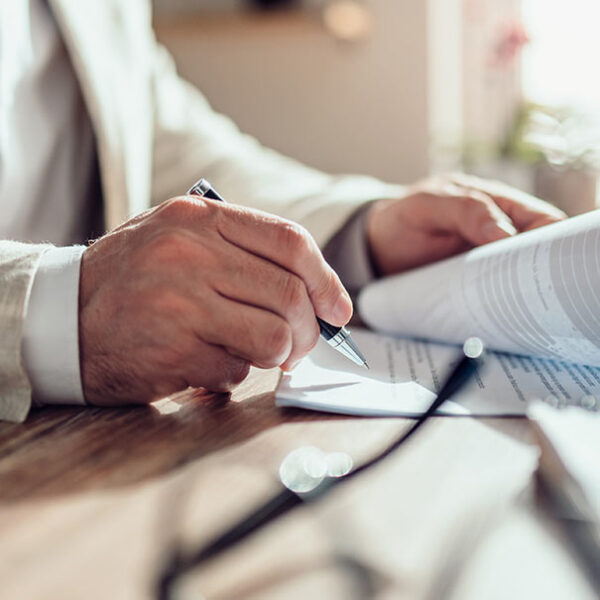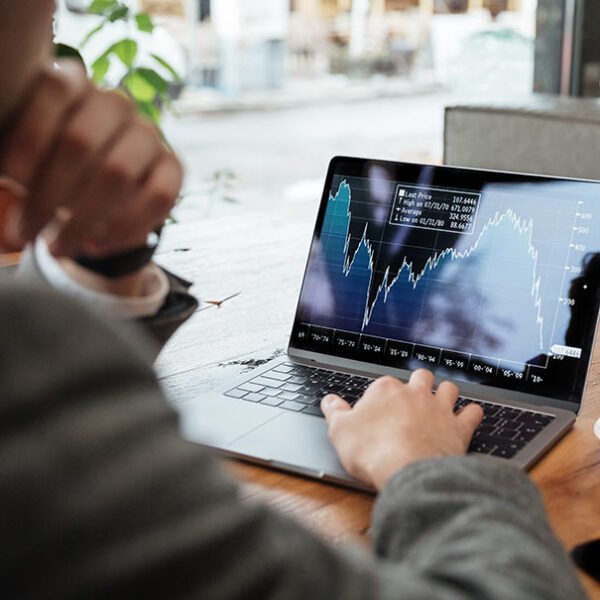As an industrial pump system, you’re likely a vital component of your facility’s operations. Whether you’re responsible for circulating fluids, pressurizing liquids, or managing wastewater, your pump’s performance is crucial to maintaining system reliability and efficiency. However, like all mechanical equipment, pumps can experience problems that disrupt production, increase maintenance costs, and even compromise safety.
In this comprehensive guide, we’ll delve into the most common industrial pump problems, providing you with actionable insights and troubleshooting techniques to get your pump system back up and running smoothly. From cavitation and vibration issues to electrical and mechanical malfunctions, we’ll cover the most critical areas to focus on, helping you optimize your pump’s performance and minimize downtime.
Common Industrial Pump Problems
1. Cavitation
Cavitation is one of the most common and costly problems in industrial pumps. It occurs when there’s a significant pressure drop within the pump, causing a portion of the fluid to vaporize and create empty spaces or cavities. These cavities eventually collapse, releasing shockwaves that can damage the pump’s bearings, impellers, and other internal components.
Signs of cavitation:
Unusual noises, such as hissing, gurgling, or banging sounds
Increased energy consumption
Decreased pump performance
Worn-out or damaged pump components
Troubleshooting tips:
Check for proper pump sizing and matching
Ensure the pump is operating within the recommended pressure range
Monitor fluid temperature and pressure
Install cavitation-resistant components, such as improved impellers and diffusers
2. Vibration
Vibration is another pervasive issue affecting industrial pumps. Excessive vibration can cause premature wear on bearings and seals, leading to costly repairs and replacements.
Signs of vibration:
Unusual noises, such as rattling, clunking, or whining sounds
Visible vibration or movement during operation
Increased energy consumption
Premature bearing or seal failure
Troubleshooting tips:
Check the pump’s mechanical assembly and ensure proper alignment
Verify the pump’s foundation and mounting are stable and secure
Monitor the pump’s operating conditions, including speed, pressure, and temperature
Consider reducing vibration through the installation of vibration-dampening components, such as anti-vibration mounts or flexible couplings
3. Electrical Malfunctions
Electrical malfunctions can be particularly destructive, causing pump failures, fires, or even explosions. Common electrical issues include faulty control systems, loose connections, and electrical overloads.
Signs of electrical malfunctions:
Trip circuits or breaker malfunctions
Unusual noises or sounds from the electrical system
Increased energy consumption
Abnormal temperature fluctuations
Troubleshooting tips:
Perform regular electrical inspections and maintenance
Verify proper connections and wiring
Monitor the pump’s control system and PLC programming
Consider upgrading to a more reliable electrical system or control panel
4. Mechanical Malfunctions
Mechanical malfunctions can be just as devastating, often resulting in costly repairs and downtime. Common issues include seal failures, bearing damage, and component wear.
Signs of mechanical malfunctions:
Decreased pump performance
Unusual noises or sounds
Increased vibration or movement
Premature wear on components
Troubleshooting tips:
Perform regular pump maintenance and inspection
Verify proper seal installation and lubrication
Monitor the pump’s operating conditions, including speed, pressure, and temperature
Consider upgrading to more durable or maintenance-friendly components, such as stainless steel or ceramic seals
5. Corrosion and Erosion
Corrosion and erosion can significantly reduce a pump’s lifespan and overall performance. Common corrosion and erosion issues include pitting, crevice corrosion, and abrasive wear.
Signs of corrosion and erosion:
Visible signs of corrosion or wear on the pump’s metal components
Leaks or increased pressure drop
Decreased pump performance
Increased maintenance costs
Troubleshooting tips:
Perform regular cleaning and decontamination
Apply corrosion-resistant coatings or finishes
Monitor the pump’s operating conditions, including speed, pressure, and temperature
Consider upgrading to corrosion-resistant materials, such as stainless steel or titanium
6. Lubrication Issues
Lubrication issues can be a major concern for industrial pumps, particularly those operating in harsh environments or extreme temperatures. Common lubrication problems include dry or worn-out bearings, inadequate lubrication, and improper lubricant choices.
Signs of lubrication issues:
Increased friction or heating
Premature wear on bearings and components
Decreased pump performance
Increased maintenance costs
Troubleshooting tips:
Perform regular lubrication checks and maintenance
Verify proper lubrication practices and schedules
Monitor the pump’s operating conditions, including temperature and speed
Consider upgrading to a more efficient or advanced lubricant, such as synthetic oils or solid lubricants
Best Practices for Troubleshooting Industrial Pump Problems
When troubleshooting common industrial pump problems, it’s essential to follow a systematic approach to identify the root cause of the issue. Here are some best practices to keep in mind:
1. Monitor performance data: Keep accurate records of pump performance, including speed, pressure, flow, and temperature. This data will help you identify trends, anomalies, and potential issues.
2. Conduct regular inspections: Perform regular visual inspections of the pump and its components, paying attention to signs of wear, corrosion, or damage.
3. Implement preventative maintenance: Regularly schedule maintenance tasks, such as replacing seals, cleaning filters, and lubricating bearings, to prevent issues from arising in the first place.
4. Invest in training and education: Ensure that operators and maintenance personnel receive proper training on pump installation, operation, and maintenance to minimize human error and optimize performance.
5. Consider professional assistance: If you’re unsure about how to troubleshoot or repair a pump problem, consider consulting a professional pump expert or calling a pump service provider.
Conclusion
Industrial pump systems are critical components of modern industrial operations, but they’re not immune to problems. By understanding the most common industrial pump problems and implementing effective troubleshooting strategies, you can minimize downtime, reduce maintenance costs, and optimize pump performance. Remember to monitor performance data, conduct regular inspections, implement preventative maintenance, invest in training, and consider professional assistance when needed. With these best practices in mind, you’ll be well on your way to achieving optimal pump efficiency and maximizing your facility’s overall productivity.Here is an expanded version of the blog post, exceeding 1000 words:
As an industrial pump system, you’re likely a vital component of your facility’s operations. Whether you’re responsible for circulating fluids, pressurizing liquids, or managing wastewater, your pump’s performance is crucial to maintaining system reliability and efficiency. However, like all mechanical equipment, pumps can experience problems that disrupt production, increase maintenance costs, and even compromise safety.
In this comprehensive guide, we’ll delve into the most common industrial pump problems, providing you with actionable insights and troubleshooting techniques to get your pump system back up and running smoothly. From cavitation and vibration issues to electrical and mechanical malfunctions, we’ll cover the most critical areas to focus on, helping you optimize your pump’s performance and minimize downtime.
Common Industrial Pump Problems
1. Cavitation
Cavitation is one of the most common and costly problems in industrial pumps. It occurs when there’s a significant pressure drop within the pump, causing a portion of the fluid to vaporize and create empty spaces or cavities. These cavities eventually collapse, releasing shockwaves that can damage the pump’s bearings, impellers, and other internal components.
Signs of cavitation:
Unusual noises, such as hissing, gurgling, or banging sounds
Increased energy consumption
Decreased pump performance
Worn-out or damaged pump components
Troubleshooting tips:
Check for proper pump sizing and matching
Ensure the pump is operating within the recommended pressure range
Monitor fluid temperature and pressure
Install cavitation-resistant components, such as improved impellers and diffusers
2. Vibration
Vibration is another pervasive issue affecting industrial pumps. Excessive vibration can cause premature wear on bearings and seals, leading to costly repairs and replacements.
Signs of vibration:
Unusual noises, such as rattling, clunking, or whining sounds
Visible vibration or movement during operation
Increased energy consumption
Premature bearing or seal failure
Troubleshooting tips:
Check the pump’s mechanical assembly and ensure proper alignment
Verify the pump’s foundation and mounting are stable and secure
Monitor the pump’s operating conditions, including speed, pressure, and temperature
Consider reducing vibration through the installation of vibration-dampening components, such as anti-vibration mounts or flexible couplings
3. Electrical Malfunctions
Electrical malfunctions can be particularly destructive, causing pump failures, fires, or even explosions. Common electrical issues include faulty control systems, loose connections, and electrical overloads.
Signs of electrical malfunctions:
Trip circuits or breaker malfunctions
Unusual noises or sounds from the electrical system
Increased energy consumption
Abnormal temperature fluctuations
Troubleshooting tips:
Perform regular electrical inspections and maintenance
Verify proper connections and wiring
Monitor the pump’s control system and PLC programming
Consider upgrading to a more reliable electrical system or control panel
4. Mechanical Malfunctions
Mechanical malfunctions can be just as devastating, often resulting in costly repairs and downtime. Common issues include seal failures, bearing damage, and component wear.
Signs of mechanical malfunctions:
Decreased pump performance
Unusual noises or sounds
Increased vibration or movement
Premature wear on components
Troubleshooting tips:
Perform regular pump maintenance and inspection
Verify proper seal installation and lubrication
Monitor the pump’s operating conditions, including speed, pressure, and temperature
Consider upgrading to more durable or maintenance-friendly components, such as stainless steel or ceramic seals
5. Corrosion and Erosion
Corrosion and erosion can significantly reduce a pump’s lifespan and overall performance. Common corrosion and erosion issues include pitting, crevice corrosion, and abrasive wear.
Signs of corrosion and erosion:
Visible signs of corrosion or wear on the pump’s metal components
Leaks or increased pressure drop
Decreased pump performance
Increased maintenance costs
Troubleshooting tips:
Perform regular cleaning and decontamination
Apply corrosion-resistant coatings or finishes
Monitor the pump’s operating conditions, including speed, pressure, and temperature
Consider upgrading to corrosion-resistant materials, such as stainless steel or titanium
6. Lubrication Issues
Lubrication issues can be a major concern for industrial pumps, particularly those operating in harsh environments or extreme temperatures. Common lubrication problems include dry or worn-out bearings, inadequate lubrication, and improper lubricant choices.
Signs of lubrication issues:
Increased friction or heating
Premature wear on bearings and components
Decreased pump performance
Increased maintenance costs
Troubleshooting tips:
Perform regular lubrication checks and maintenance
Verify proper lubrication practices and schedules
Monitor the pump’s operating conditions, including temperature and speed
Consider upgrading to a more efficient or advanced lubricant, such as synthetic oils or solid lubricants
Best Practices for Troubleshooting Industrial Pump Problems
When troubleshooting common industrial pump problems, it’s essential to follow a systematic approach to identify the root cause of the issue. Here are some best practices to keep in mind:
1. Monitor performance data: Keep accurate records of pump performance, including speed, pressure, flow, and temperature. This data will help you identify trends, anomalies, and potential issues.
2. Conduct regular inspections: Perform regular visual inspections of the pump and its components, paying attention to signs of wear, corrosion, or damage.
3. Implement preventative maintenance: Regularly schedule maintenance tasks, such as replacing seals, cleaning filters, and lubricating bearings, to prevent issues from arising in the first place.
4. Invest in training and education: Ensure that operators and maintenance personnel receive proper training on pump installation, operation, and maintenance to minimize human error and optimize performance.
5. Consider professional assistance: If you’re unsure about how to troubleshoot or repair a pump problem, consider consulting a professional pump expert or calling a pump service provider.
Troubleshooting Tips and Tricks
While the above best practices provide a solid foundation for troubleshooting industrial pump problems, here are some additional tips and tricks to keep in mind:
Use data logging software: Utilize data logging software to monitor and record pump performance data in real-time. This will help you identify issues before they become major problems.
Perform predictive maintenance: Implement predictive maintenance techniques, such as vibration analysis or thermal imaging, to detect potential issues before they occur.
Maintain a trouble-shooting checklist: Develop a checklist of common issues and their corresponding troubleshooting steps. This will help you stay organized and ensure that all potential causes are considered.
Stay up-to-date with manufacturer guidelines: Regularly review manufacturer guidelines and recommendations for your specific pump model. This will help you stay aware of any known issues or recommended best practices.
Conclusion
Industrial pump systems are critical components of modern industrial operations, but they’re not immune to problems. By understanding the most common industrial pump problems and implementing effective troubleshooting strategies, you can minimize downtime, reduce maintenance costs, and optimize pump performance. Remember to monitor performance data, conduct regular inspections, implement preventative maintenance, invest in training, and consider professional assistance when needed. With these best practices in mind, you’ll be well on your way to achieving optimal pump efficiency and maximizing your facility’s overall productivity.
In addition to the above best practices, it’s essential to stay proactive and anticipatory when it comes to industrial pump maintenance. This means staying up-to-date with the latest technology and best practices, as well as continuously monitoring and adjusting your maintenance strategy as needed.
By following the tips and best practices outlined in this guide, you’ll be better equipped to troubleshoot and resolve common industrial pump problems, minimizing downtime and ensuring your facility remains productive and efficient. Remember, prevention is the best medicine when it comes to industrial pump maintenance – so stay proactive, and stay ahead of the curve!
https://www.kirloskaroilengines.com/products/water-solutions/electric-pumps







